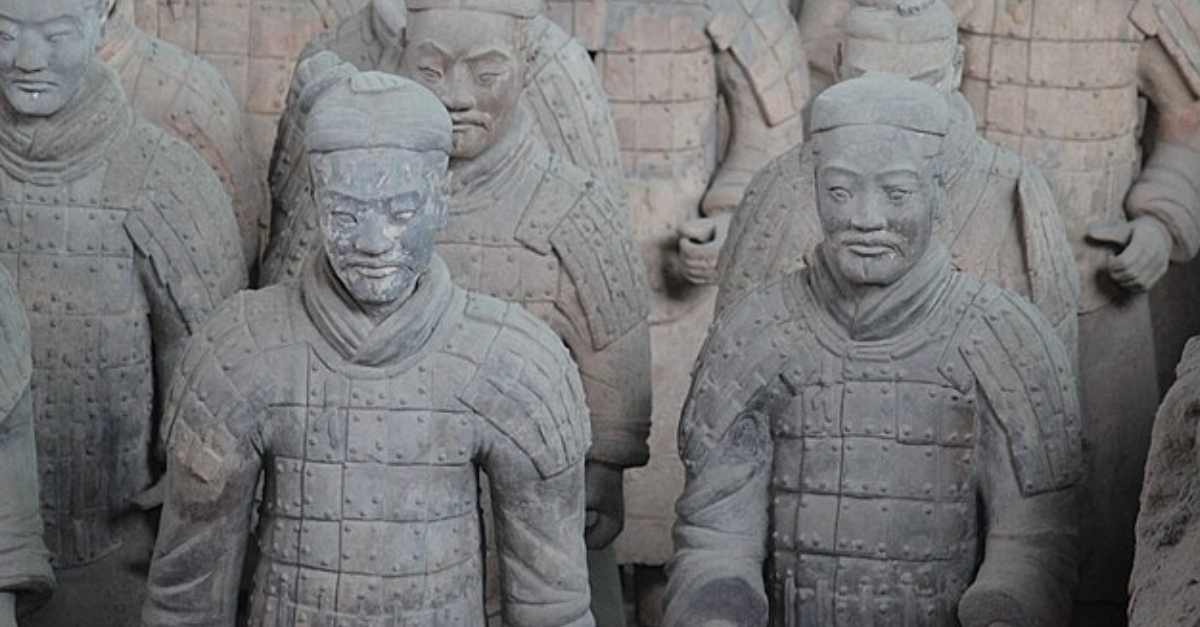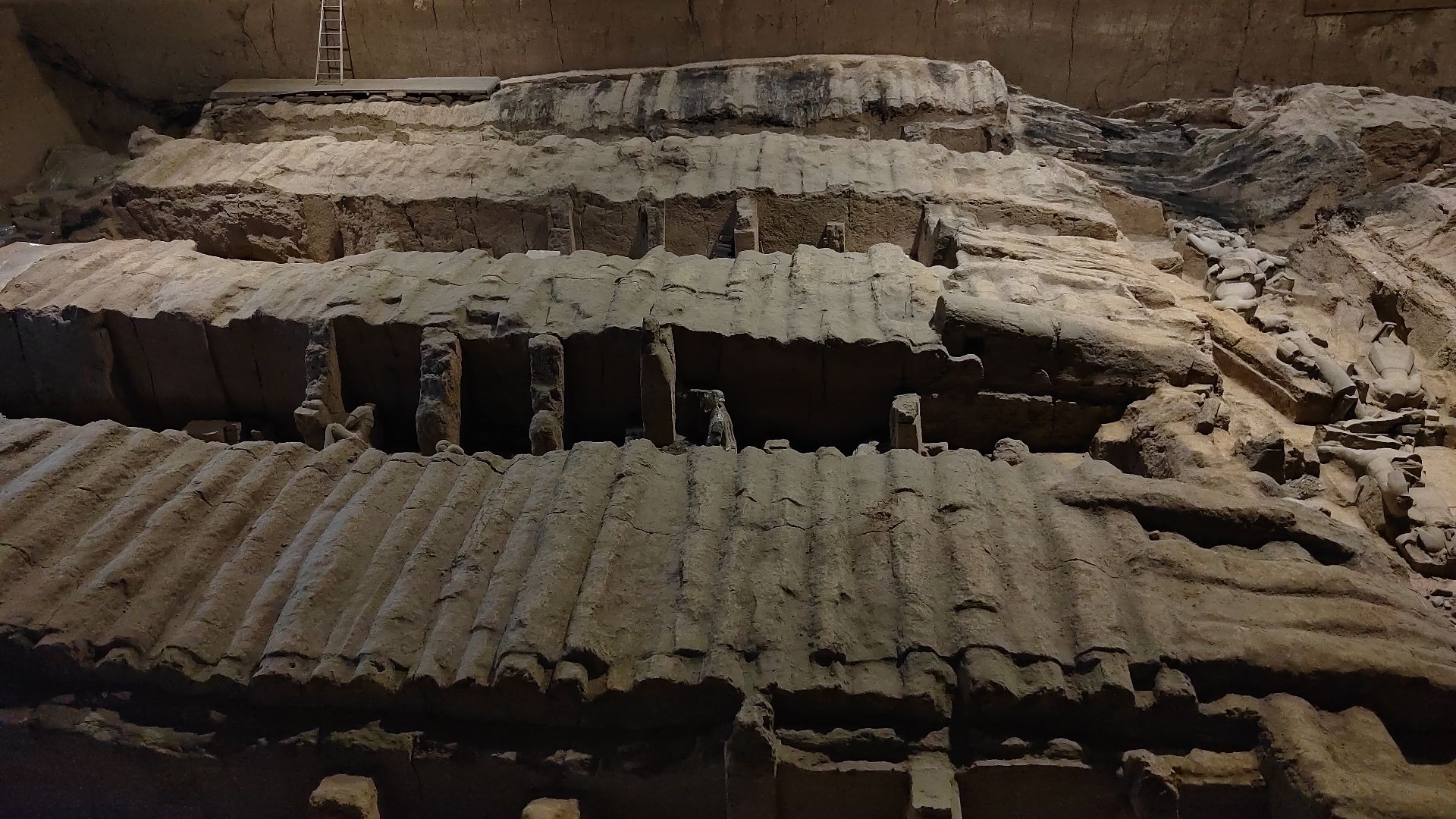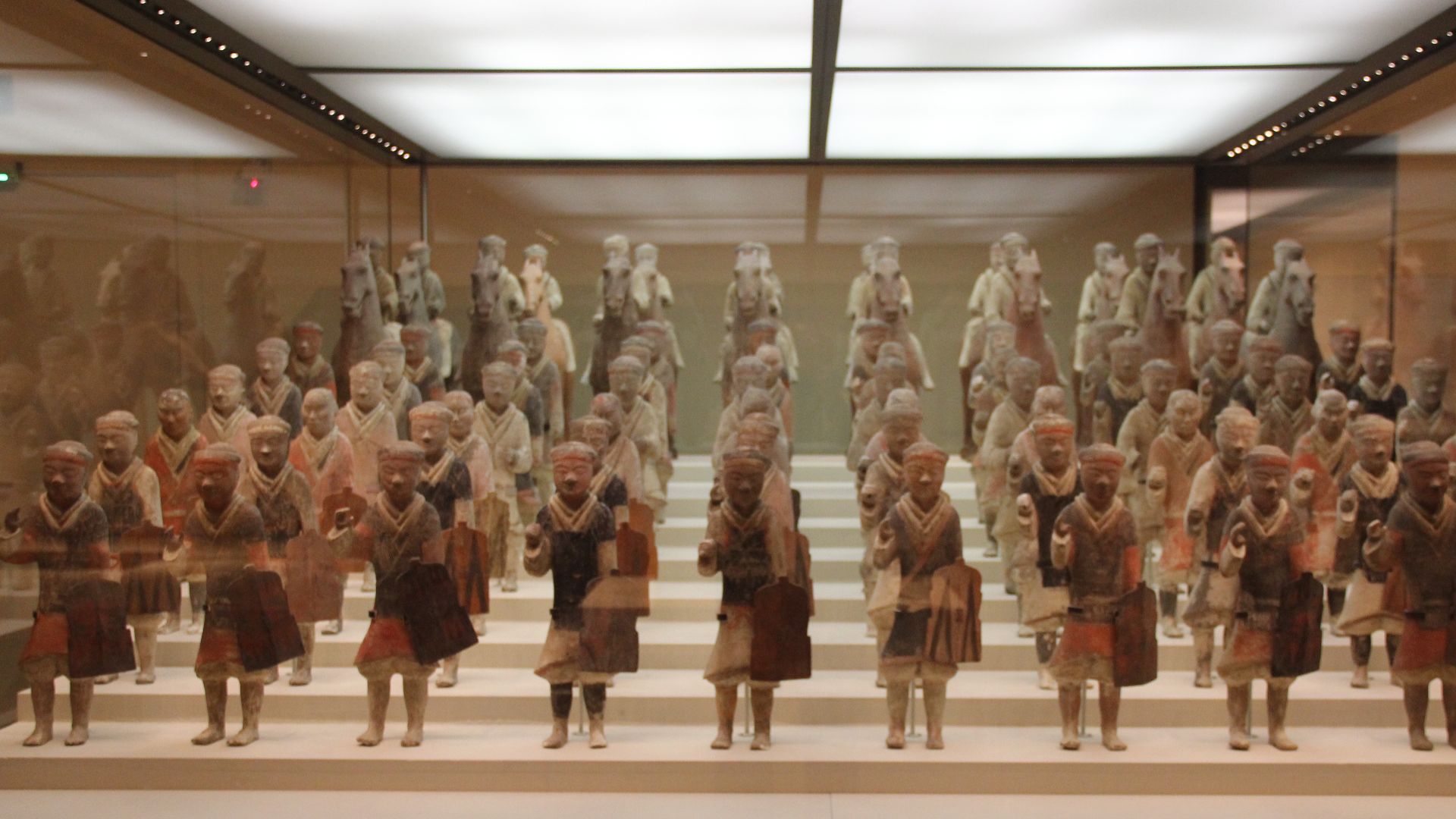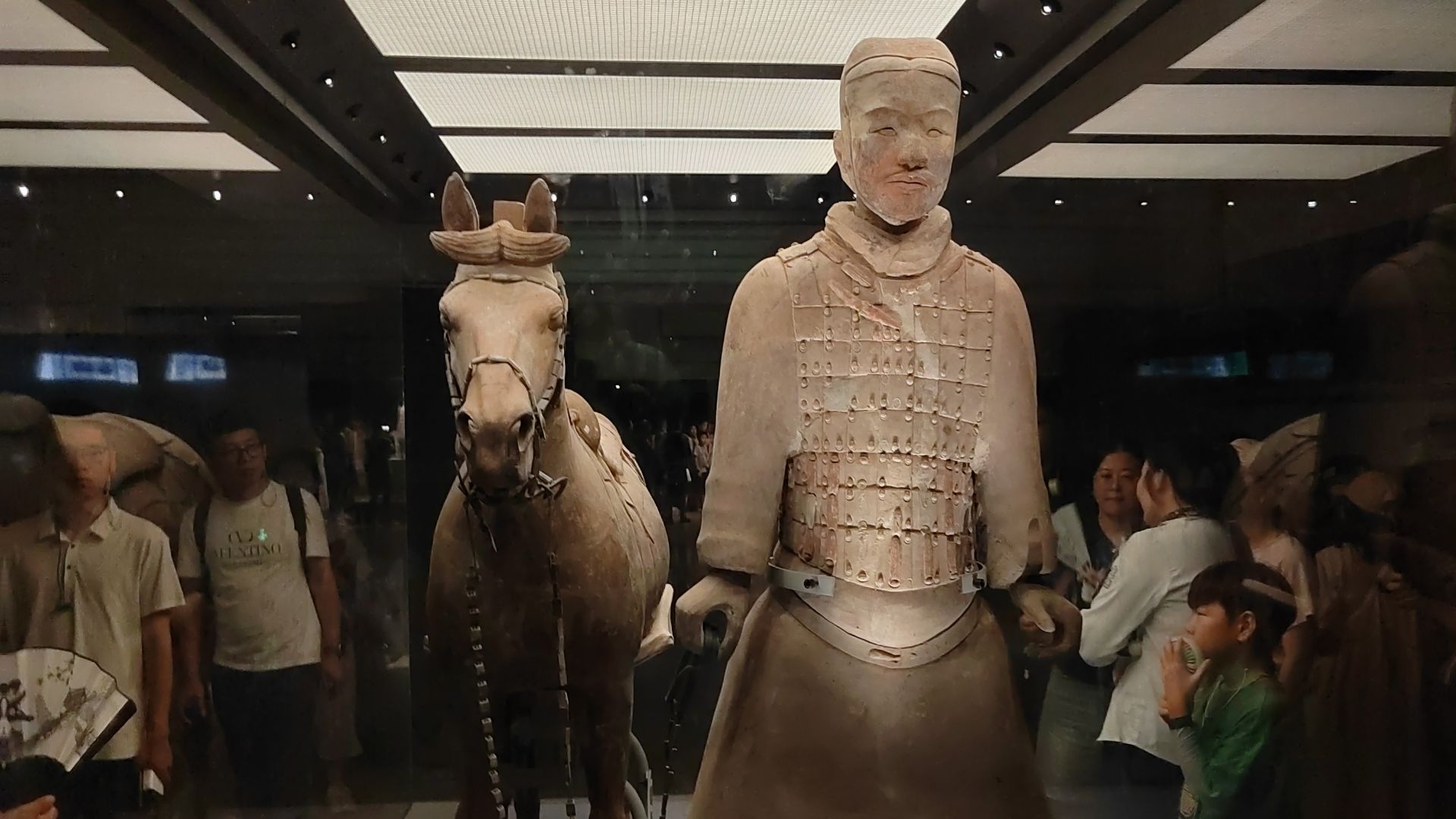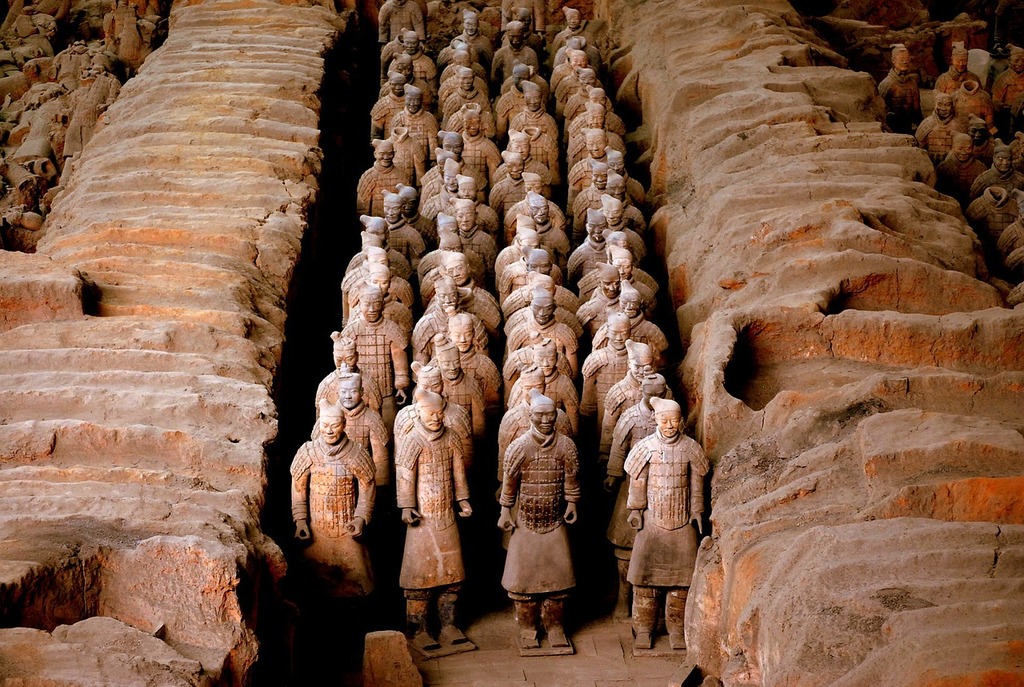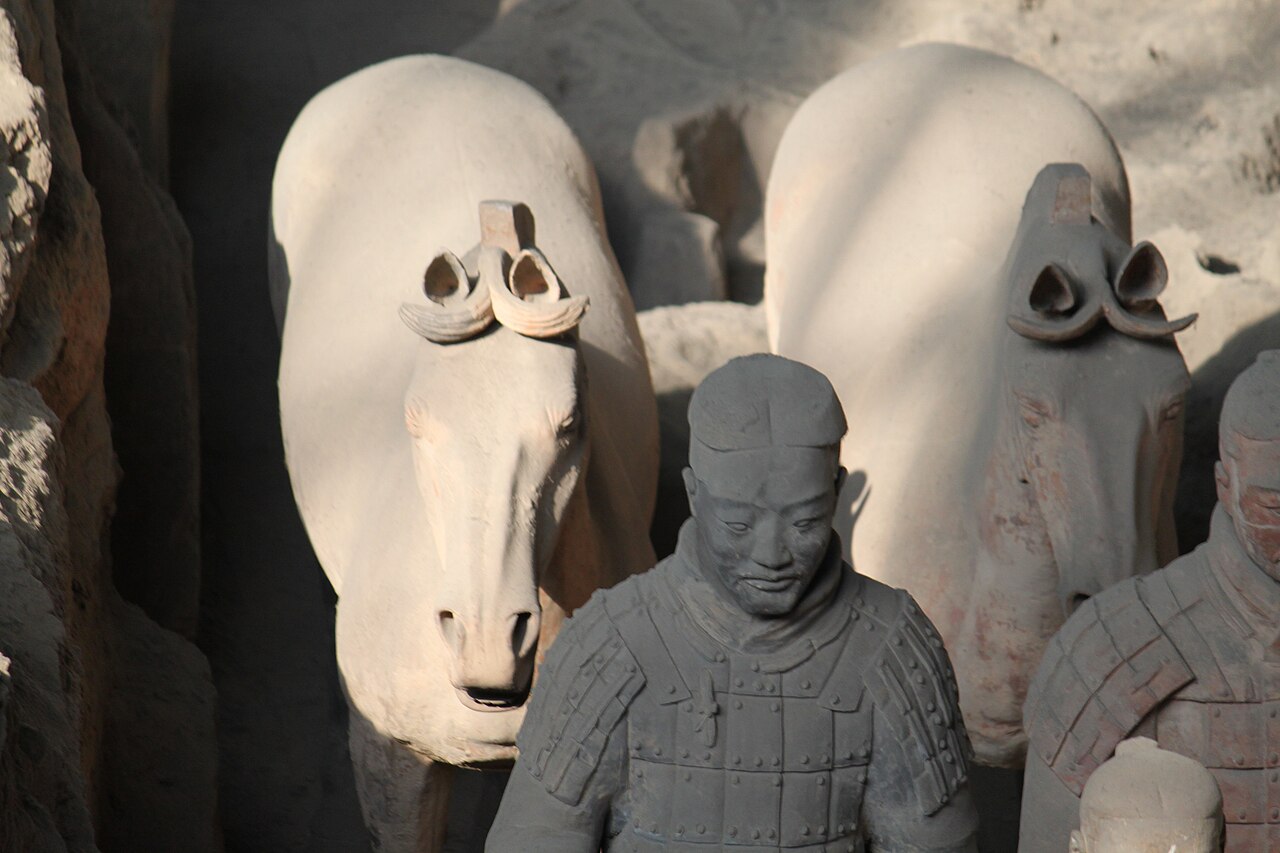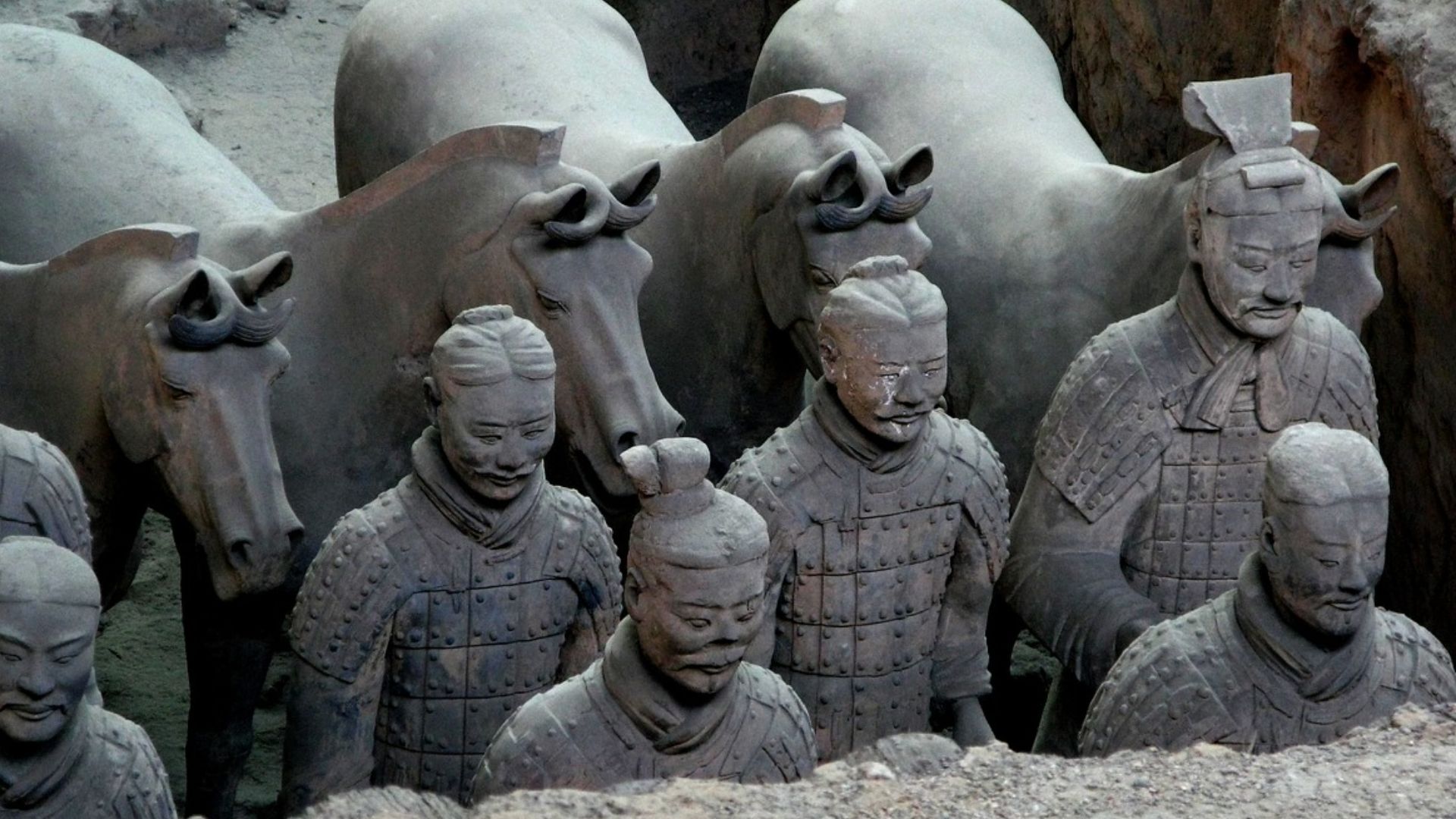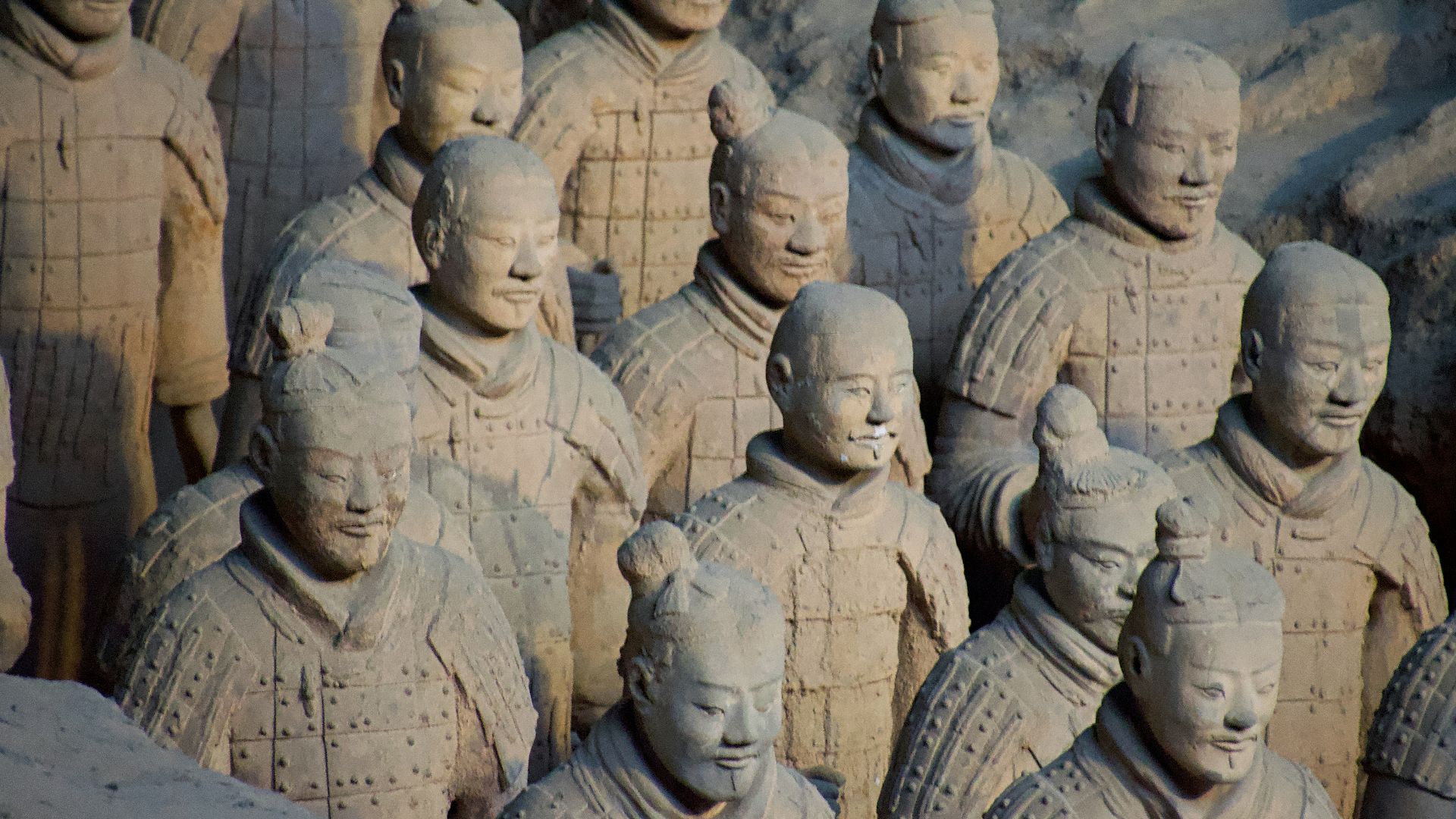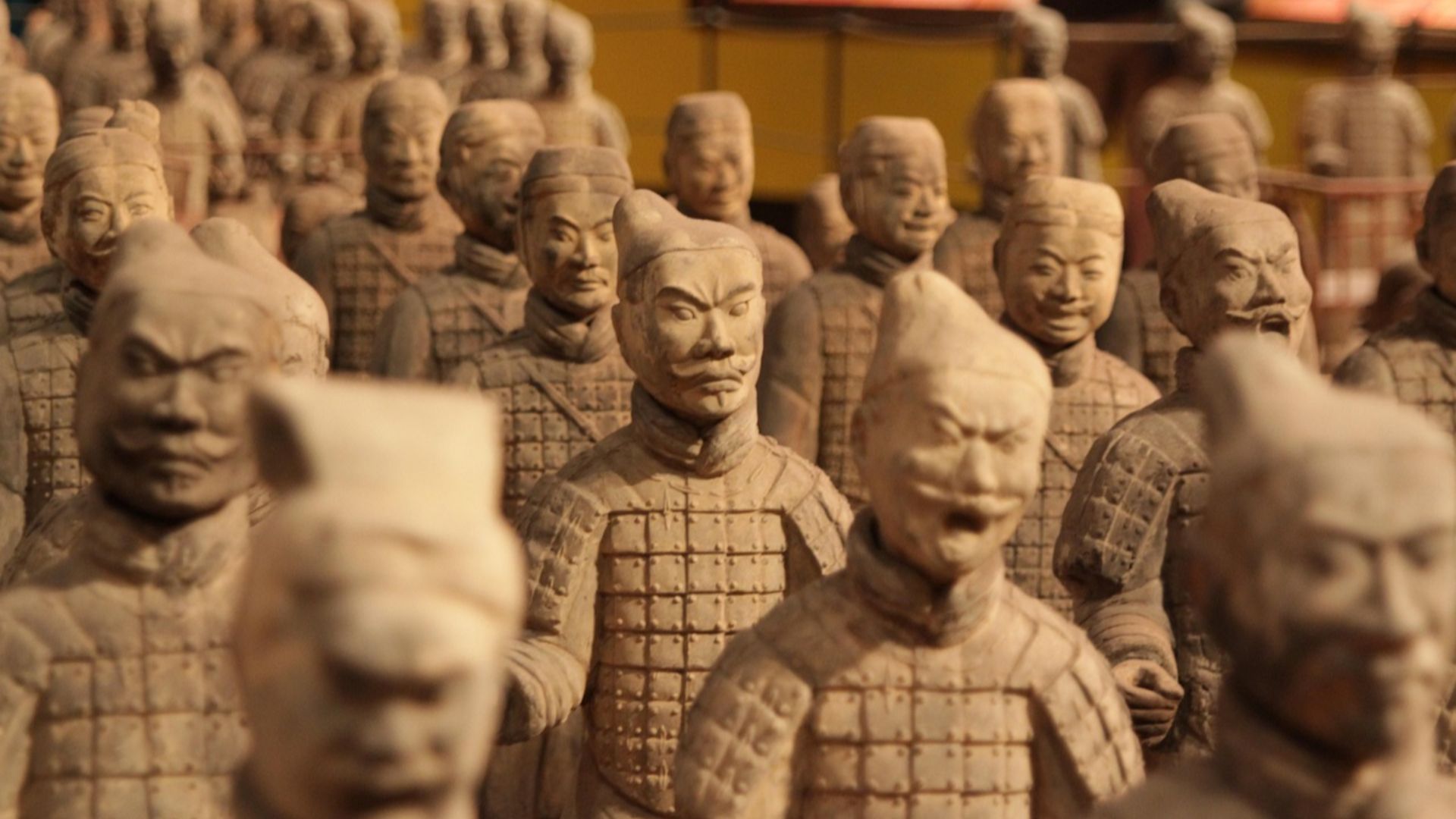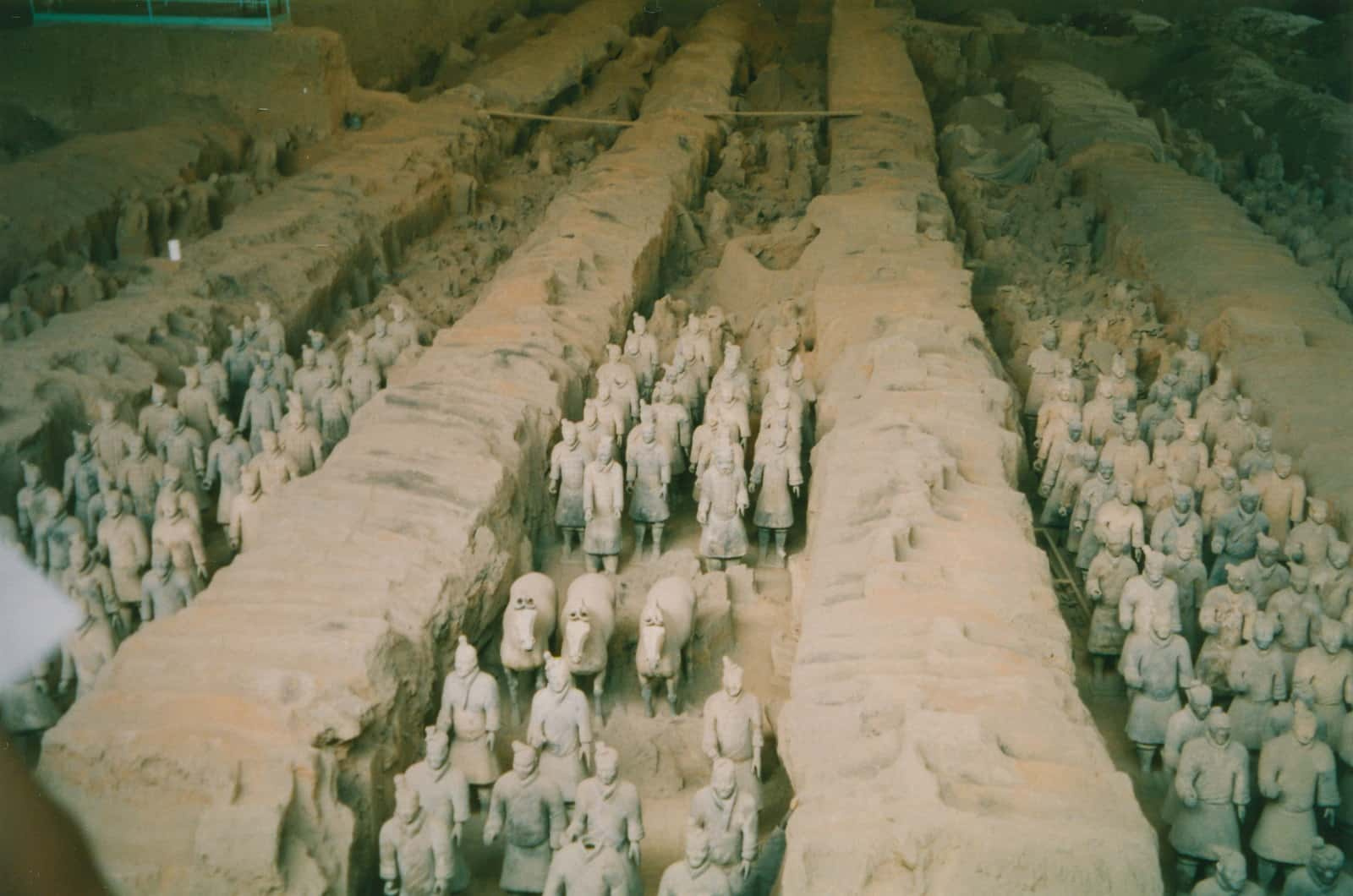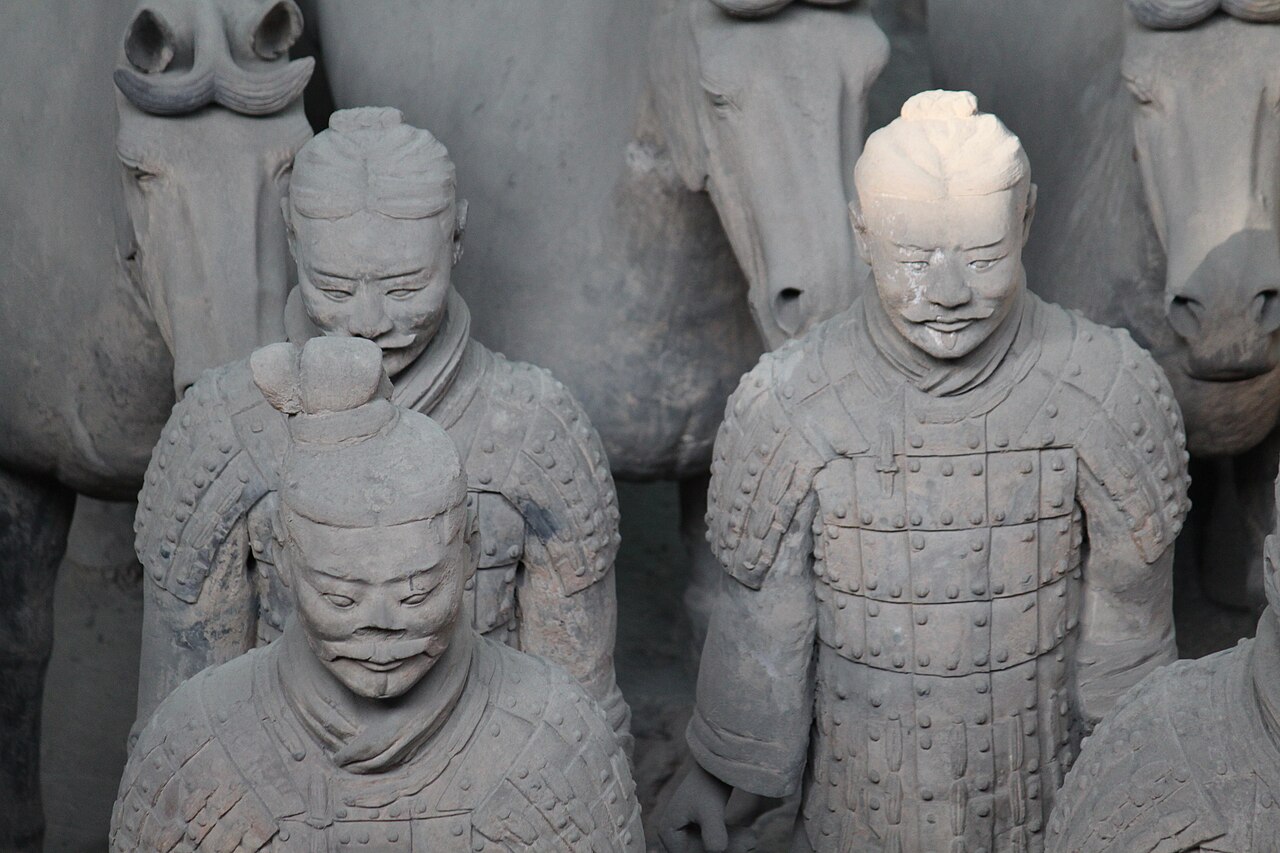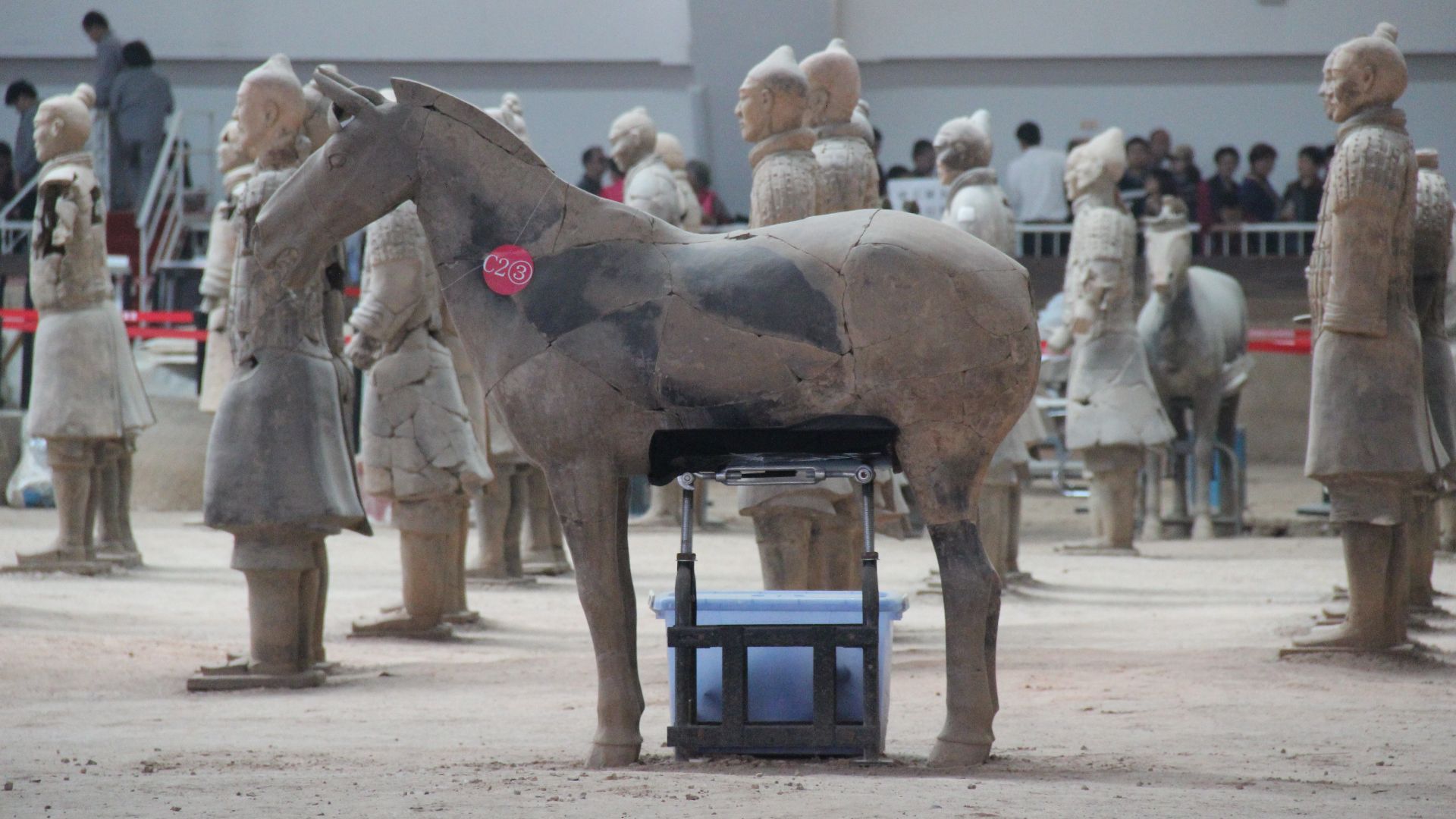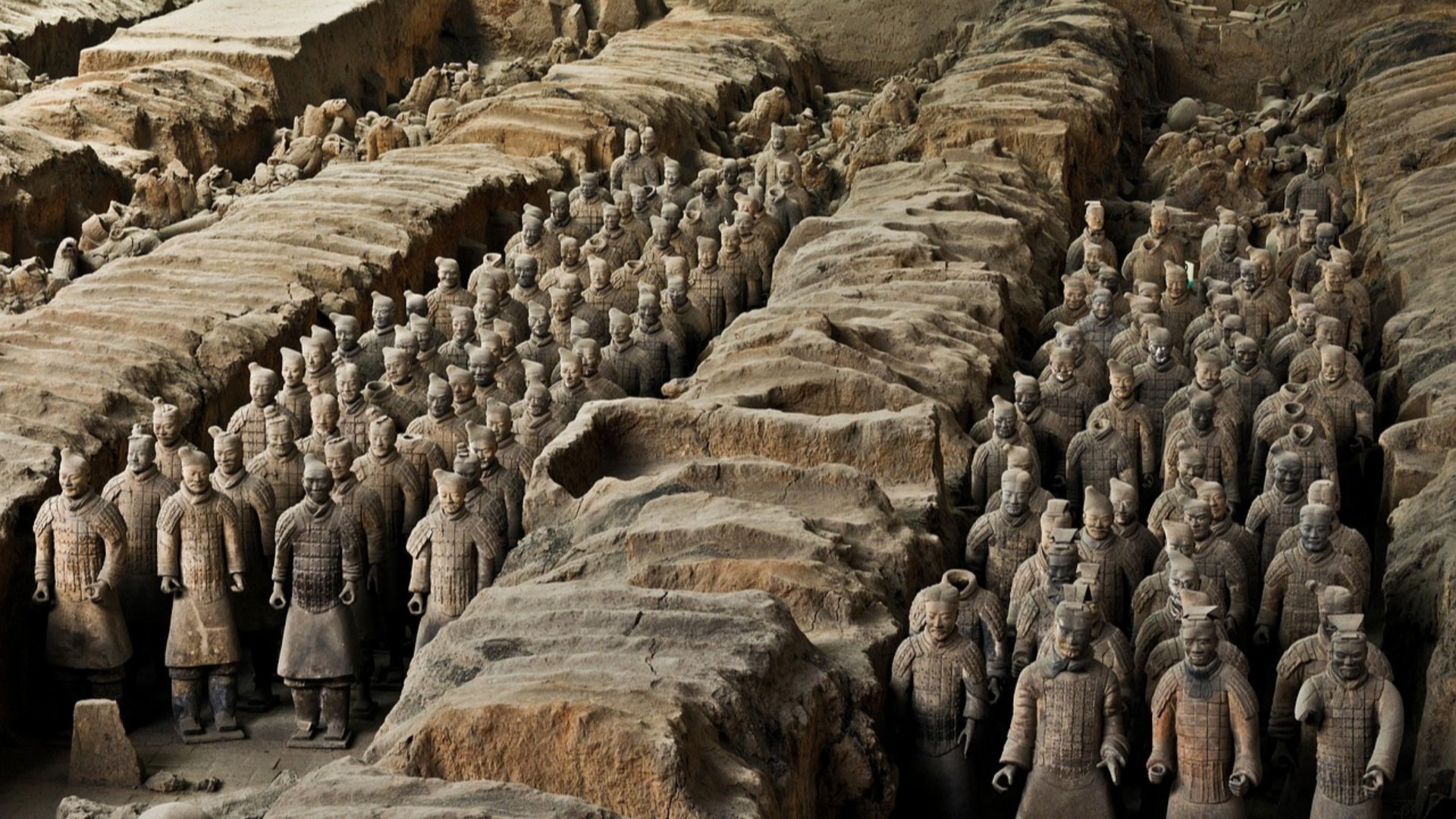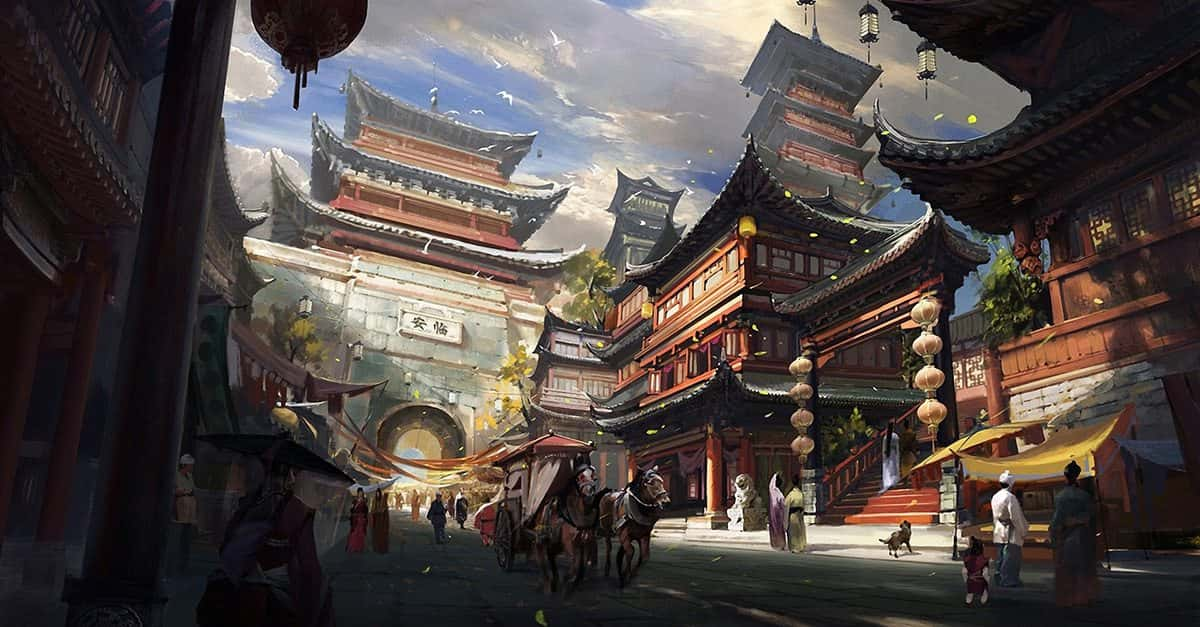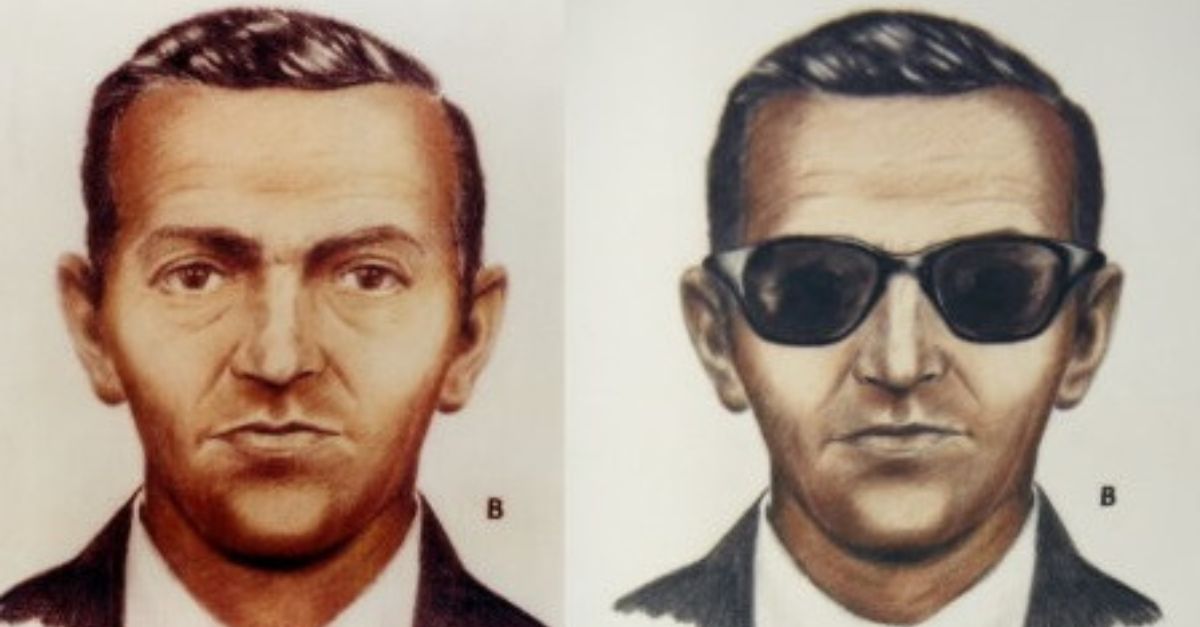Drumroll… and Unearthed!
In a sensational find announced in December 2024, archaeologists uncovered a remarkable new figure among the world-famous Terracotta Warriors guarding the Mausoleum of Qin Shi Huang—China’s legendary imperial tomb. This life-sized warrior’s elaborate details and commanding presence mark him as something truly special—the kind of figure rarely seen in half a century of excavations.
The Day the Army Saw Sunlight Again
In March 1974, farmers digging a well near Xiyang village in Shaanxi Province struck pottery fragments unlike anything they’d seen before. At first, it seemed like ordinary shards—but the pieces were unusually large, with lifelike detailing. Word spread quickly, and soon local authorities called in archaeologists to investigate.
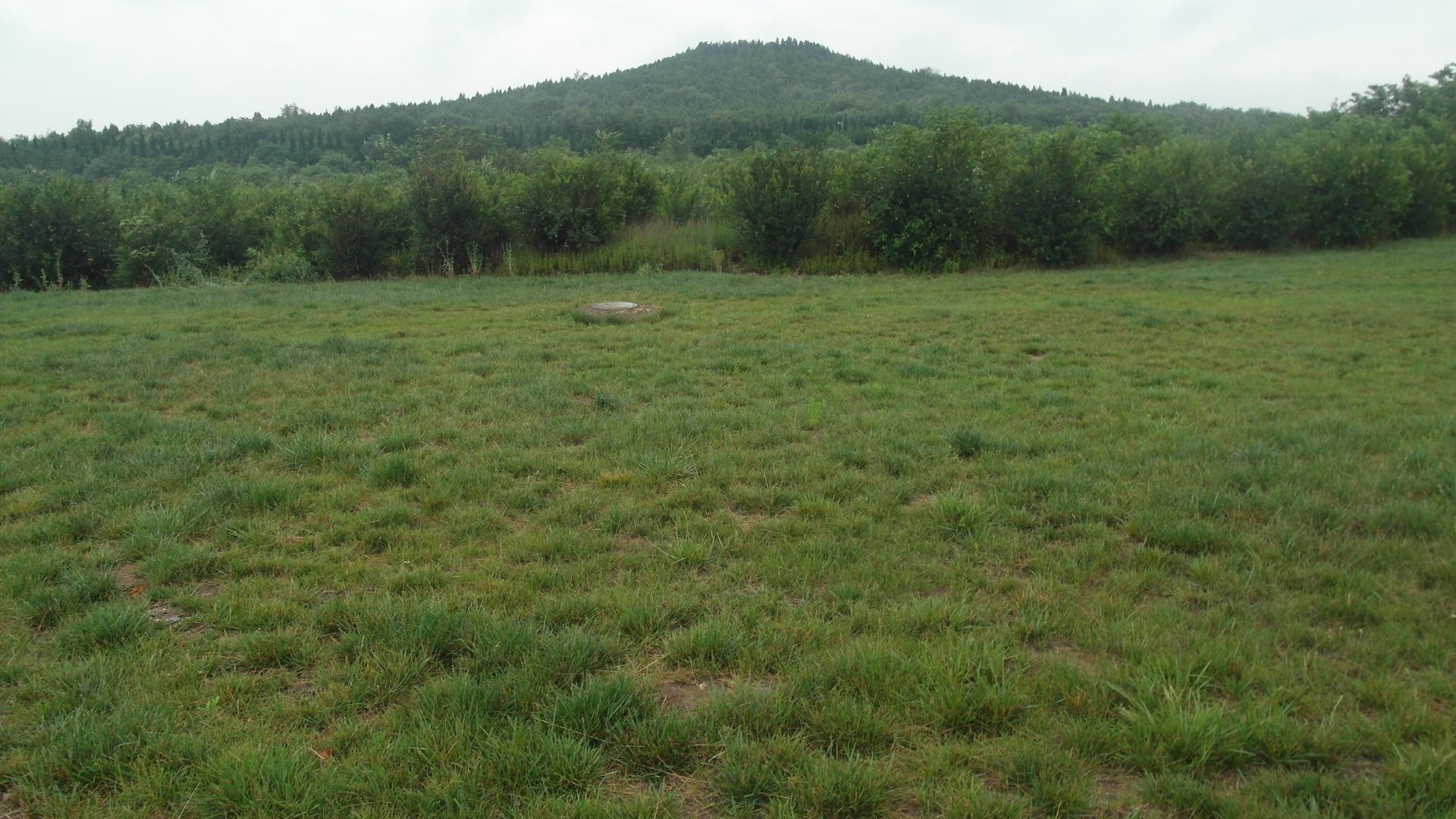 Shen Weilong, Wikimedia Commons
Shen Weilong, Wikimedia Commons
An Army Beneath the Fields
The team soon realized they’d uncovered the vast mausoleum army of Qin Shi Huang—archers, infantry, cavalry, and chariots, crafted over 2,000 years ago to guard China’s first emperor in the afterlife. The find stunned the world and revealed thousands of unique warriors, each with distinct features, frozen in silent formation underground.
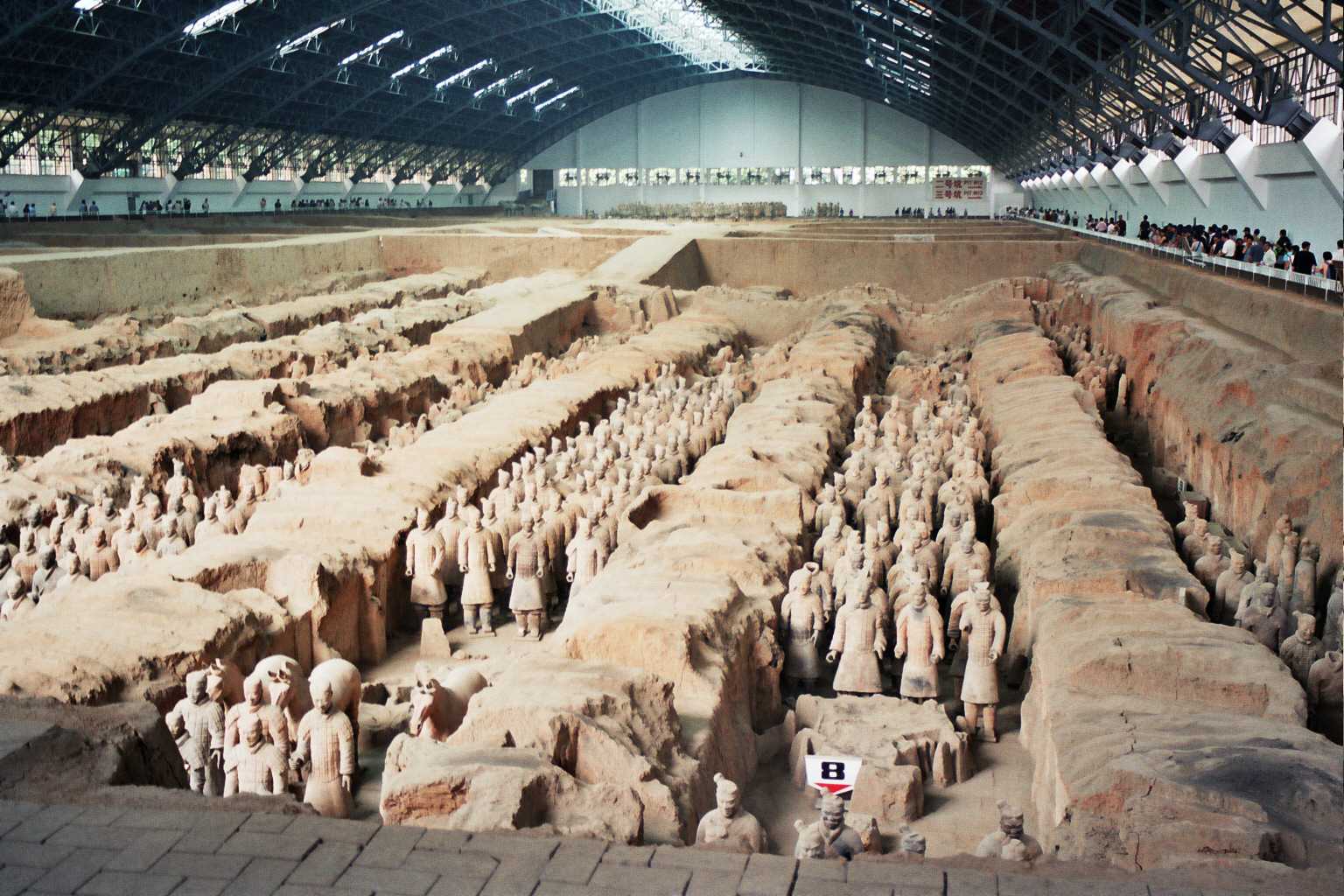 Unknown Author, Wikimedia Commons
Unknown Author, Wikimedia Commons
From Past to Present: Pit No. 2 Reveals More
Half a century later, excavations continue to push deeper into the emperor’s necropolis. Pit No. 2—famed for its mix of archers, cavalry, and chariots—has become a hotspot for new revelations. It’s here that the newly unearthed commander has been standing watch for over two millennia.
A Spot That Speaks Volumes
Archaeologists believe the commander’s exact location signals his status. As Zhu Sihong, head of the excavation, explained, “based on its location, we believe this figure was likely the highest-ranking military commander of this unit.” Placement was everything.
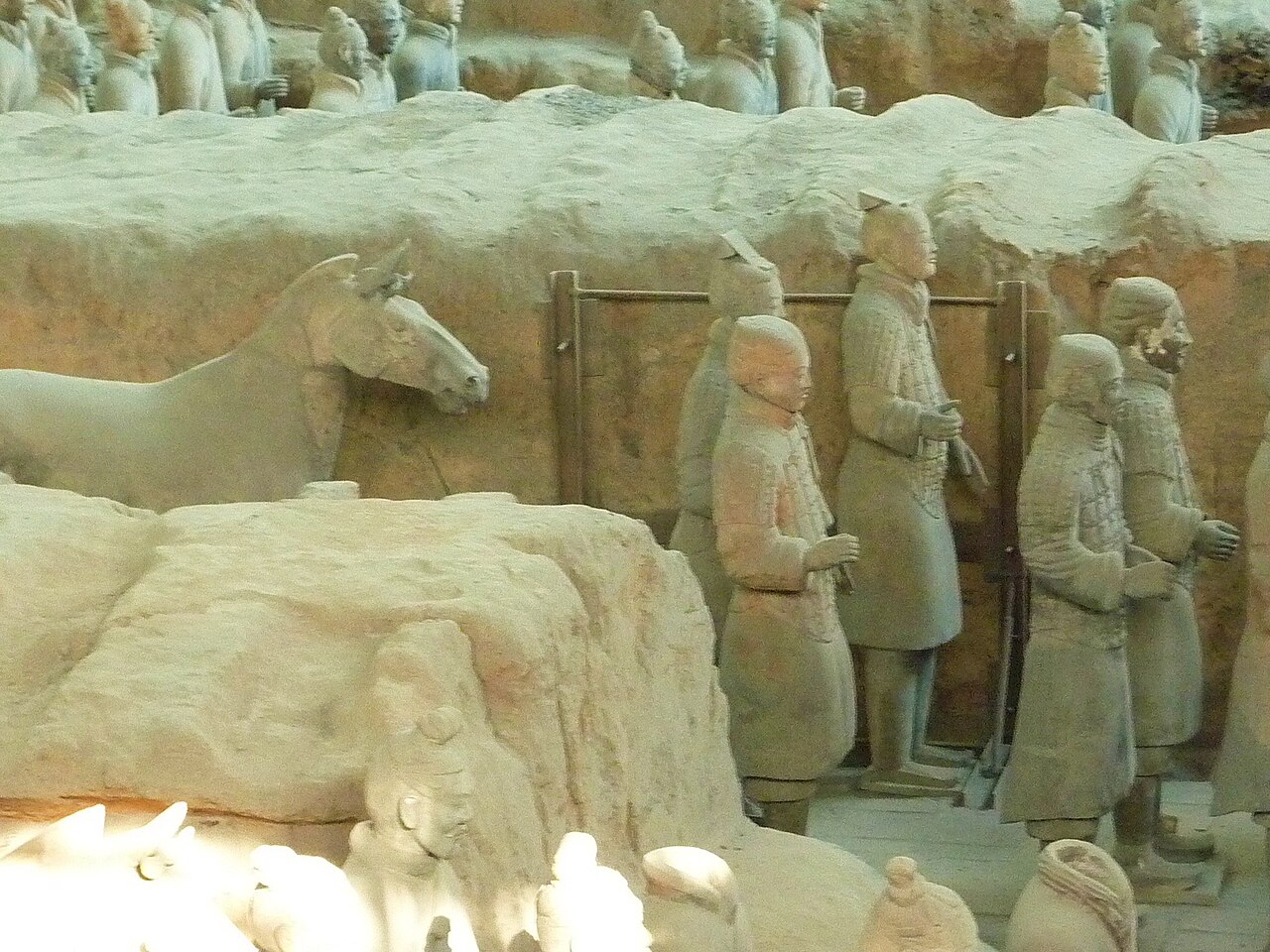 ·˙·ChinaUli2010·.·, CC BY 3.0, Wikimedia Commons
·˙·ChinaUli2010·.·, CC BY 3.0, Wikimedia Commons
Armor & Adornments: Clues to Rank
This warrior’s intricate armor, ribbon-like adornments, and a detailed headdress set him apart from common soldiers. His clasped hands suggest command—each detail intentionally crafted to project authority.
Chariots and Horses: Royal Escort
He wasn’t alone. The pit also revealed two chariots, three terracotta horses, and three other warriors. These add richness to our understanding of how Qin Shi Huang envisioned his afterlife army.
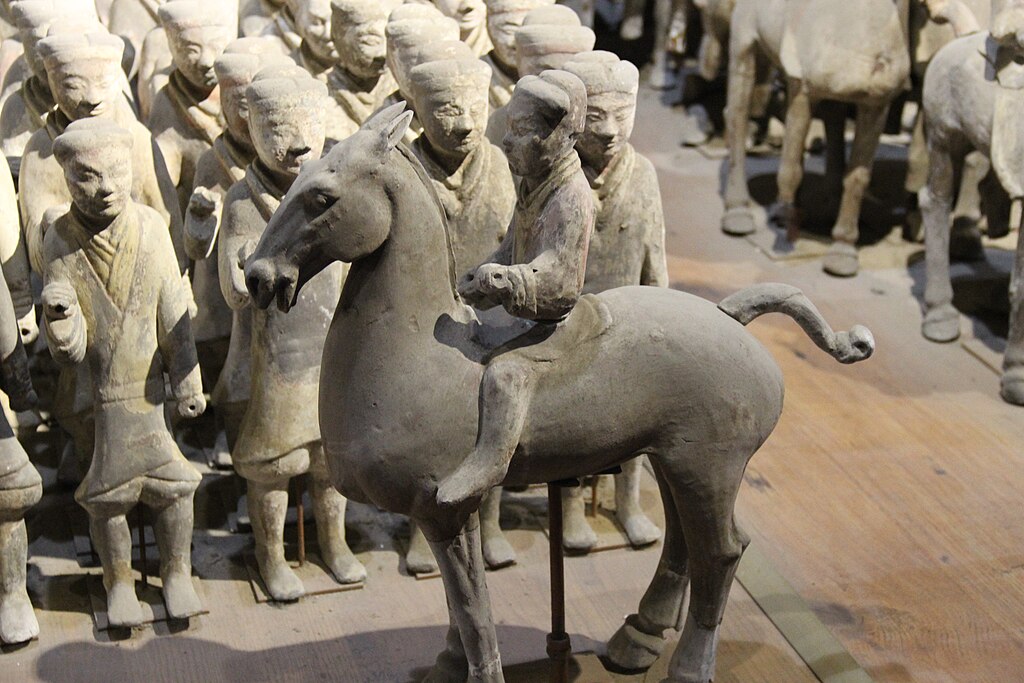 Gary Lee Todd, PhD, Wikimedia Commons
Gary Lee Todd, PhD, Wikimedia Commons
Unexpected Command in the Chariot Line
One figure near the chariots was first thought to be a third chariot warrior. Cleaning revealed he was actually a commanding officer—offering rare insight into how Qin chariot crews and battlefield leadership were structured.
 Mori Munekata Hayashi Jiisi, Wikimedia Commons
Mori Munekata Hayashi Jiisi, Wikimedia Commons
Colors Hidden Underground
Traces of original paint remain—a rare survival thanks to the silt’s stable humidity and temperature. These pigments offer insight into the Qin dynasty’s once-vivid color schemes.
 jesse, CC BY-SA 4.0, Wikimedia Commons
jesse, CC BY-SA 4.0, Wikimedia Commons
Advanced Extraction Techniques
The officer’s painted head was removed with cutting-edge care—using 3D scanning, moisture control, and pigment preservation—to ensure it remained intact after over 2,000 years underground.
Brains Meet Brawn: Archaeology Meets Art
Excavators are cleaning and reassembling the statue with precision, combining conservation science with the artistry of ancient craftsmanship.
First Since ’94: A Long Wait
Excavations here began in 1994 and resumed formally in 2015. Not a single commander emerged from this pit until now—a testament to how patient archaeology must be.
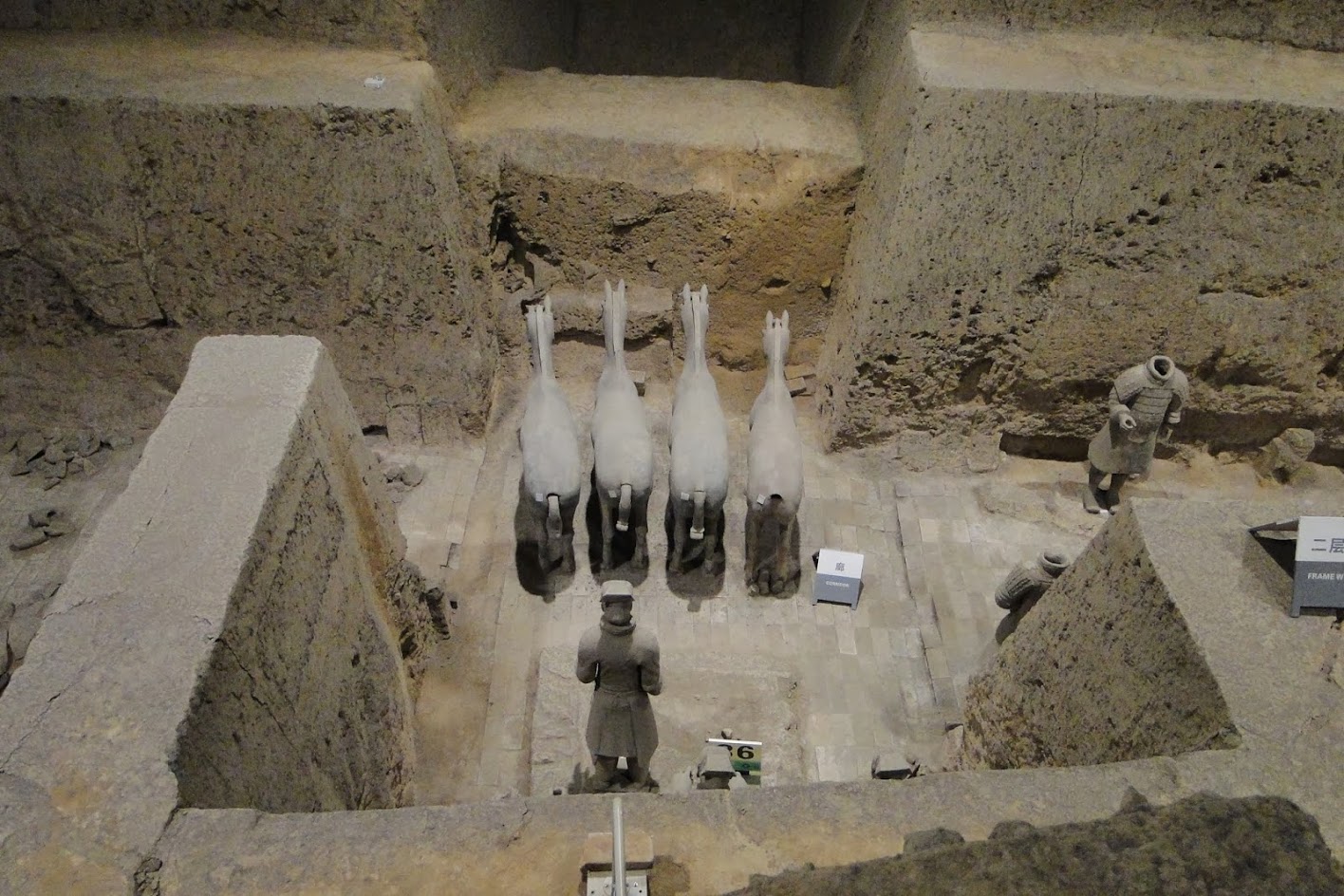 Leon petrosyan, CC BY-SA 4.0 , Wikimedia Commons
Leon petrosyan, CC BY-SA 4.0 , Wikimedia Commons
Only Ten in the Army
Among thousands of figures, only about ten commanders have ever been found. Each one adds to our understanding of the upper ranks of Qin’s formidable forces.
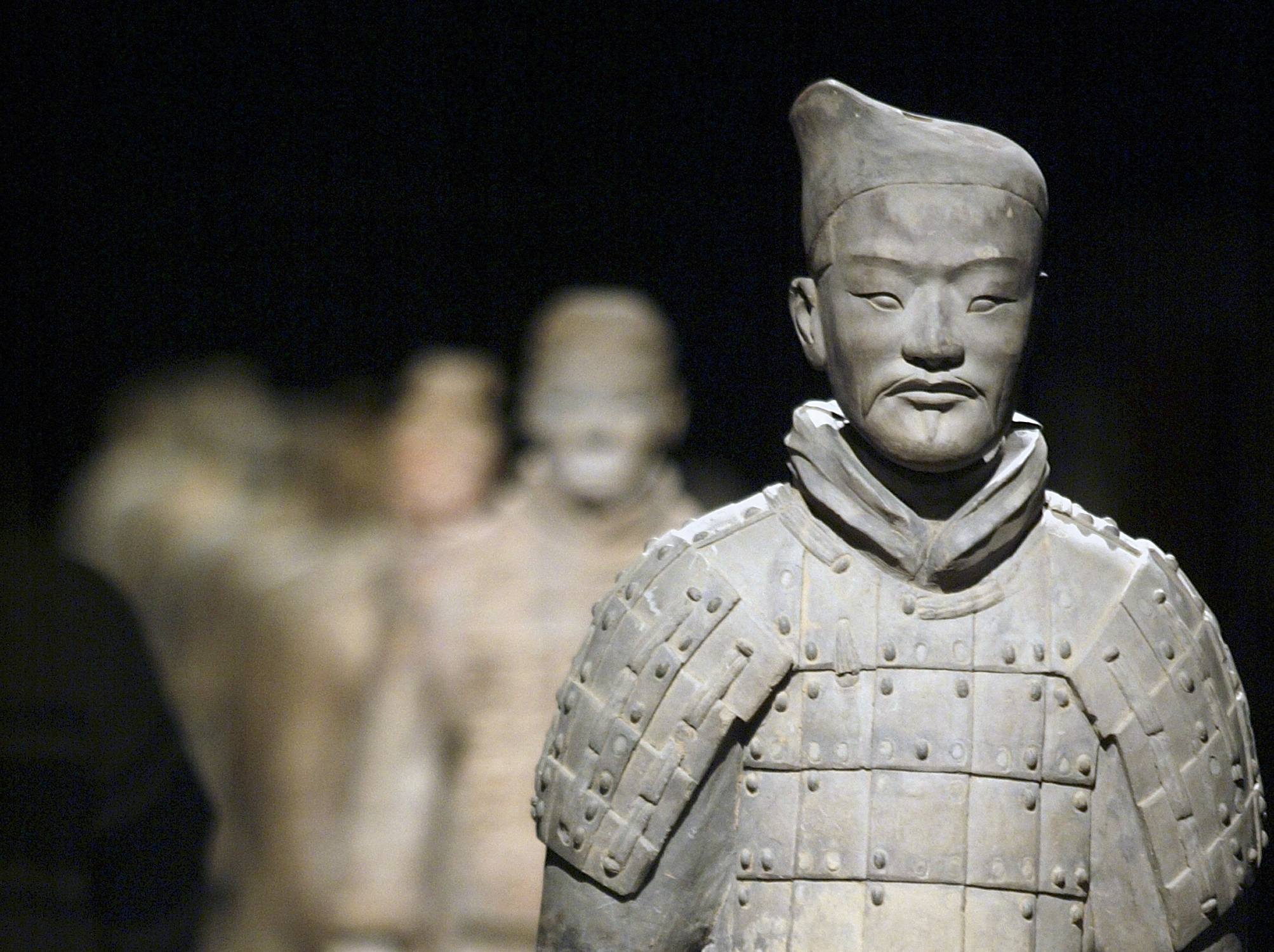 Victor Fraile Rodriguez, Getty Images
Victor Fraile Rodriguez, Getty Images
Resistance Against Time
After more than 50 years of ongoing excavations, the Terracotta Army still yields surprises. This latest find shows the site is far from exhausted.
The Legacy of Qin’s Army
The Terracotta Army, discovered in 1974, was built to guard Qin Shi Huang in the afterlife. Over 2,000 figures have been excavated so far, but as many as 8,000 may still lie buried. They were an eternal army, mirroring the emperor’s dominance in life.
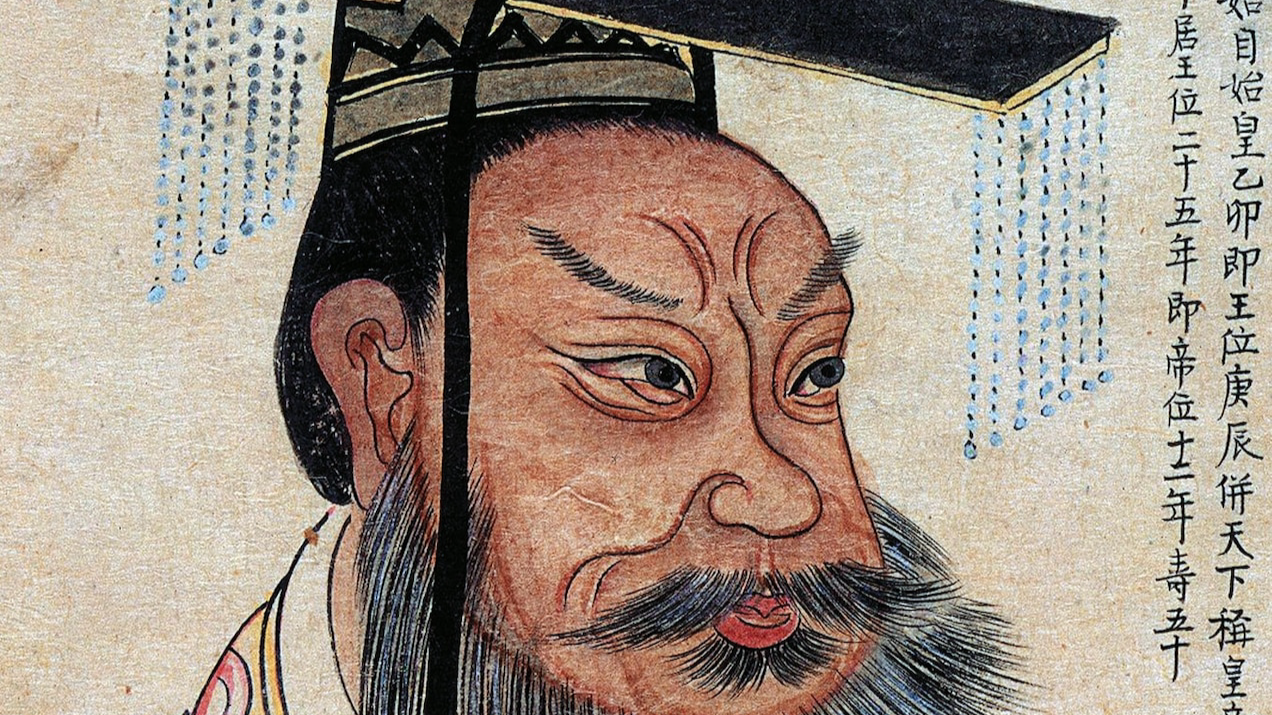 Unknown author, Wikimedia Commons
Unknown author, Wikimedia Commons
A 2,000-Year-Old Time Capsule
Sculpted in the late 3rd century BCE, this figure is a direct link to the power and artistry of the Qin dynasty—a tangible piece of history that once existed only in legend.
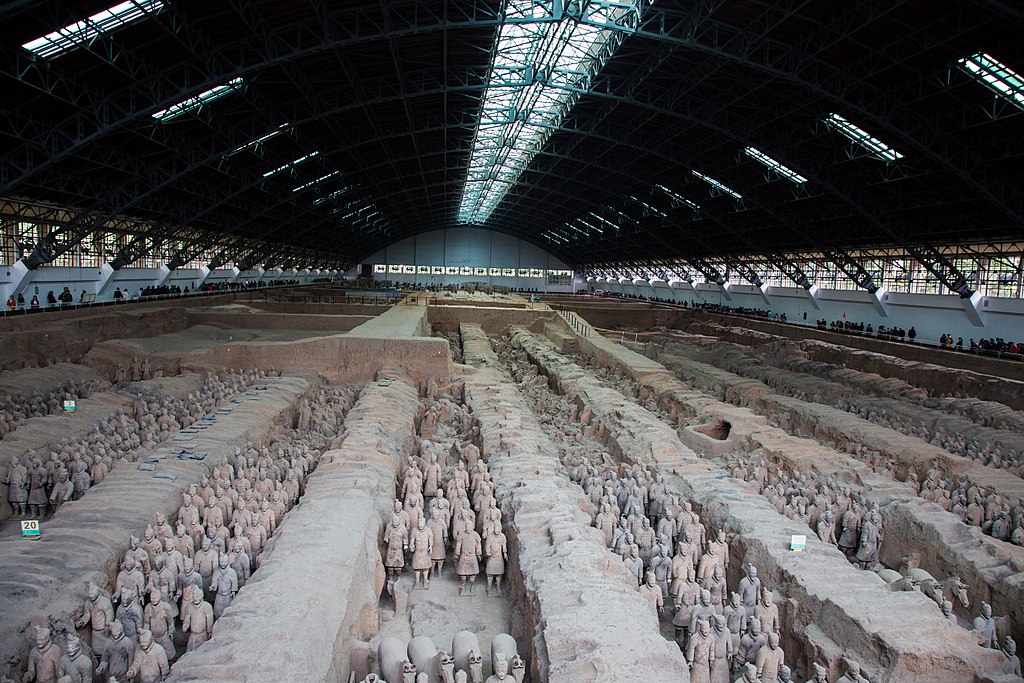 Jmhullot, CC BY 3.0, Wikimedia Commons
Jmhullot, CC BY 3.0, Wikimedia Commons
Pieces of the Qin Puzzle
Every new statue adds a fragment to the bigger picture of Qin-era governance, military organization, and ceremonial life. From square to shield-shaped faces, each warrior bears an individual identity—proof of the artisans’ unmatched craftsmanship.
Comparisons to Other Commanders
Researchers will compare this figure’s armor, stance, and ornamentation to other commanders to see how rank and status evolved across the pits.
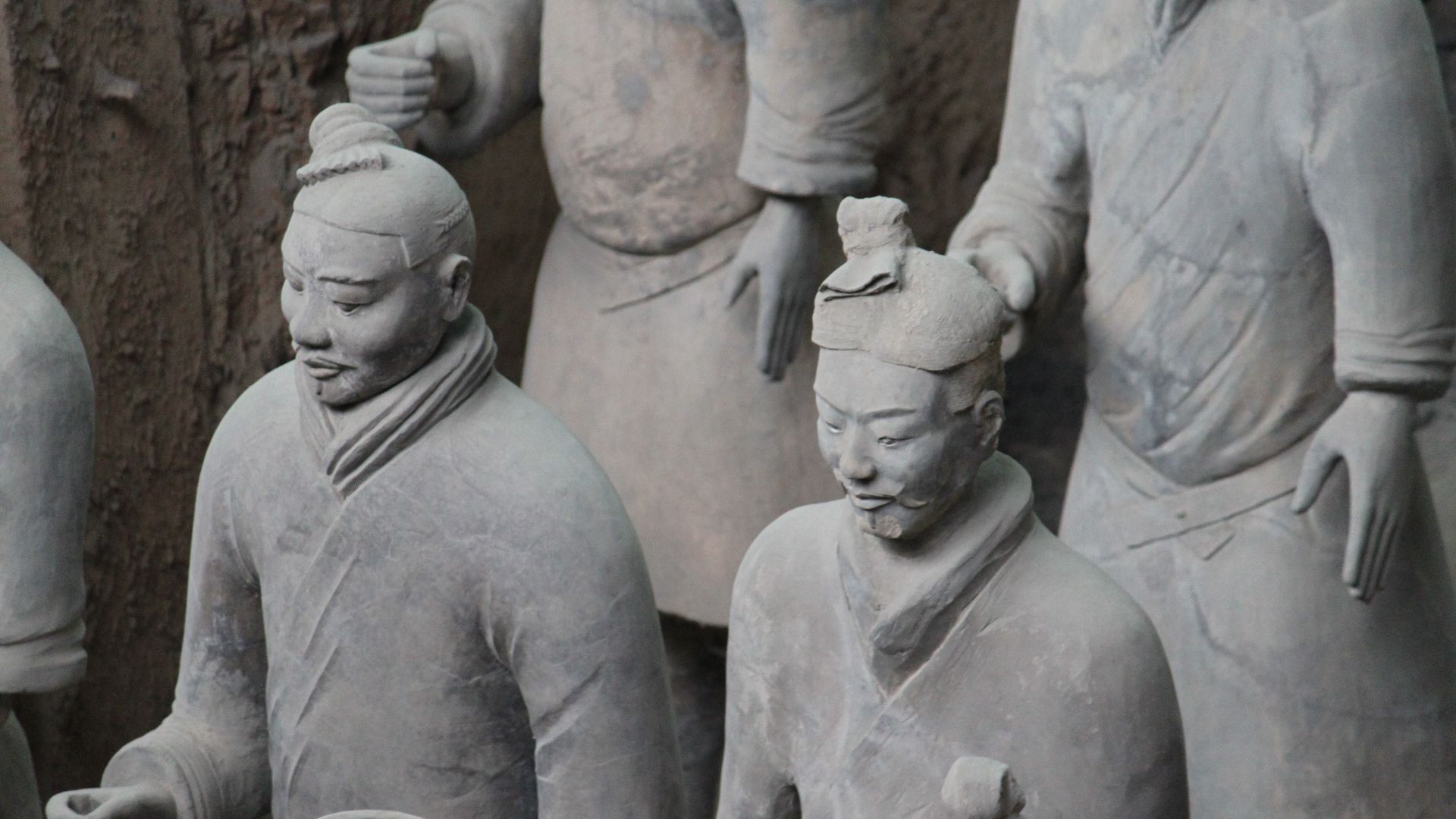 Gary Todd from Xinzheng, China, Wikimedia Commons
Gary Todd from Xinzheng, China, Wikimedia Commons
Tech Tools in the Dig
Advanced methods like ground-penetrating radar and pigment spectroscopy help archaeologists uncover details invisible to the naked eye.
International Fascination
From blockbuster museum exhibitions to documentaries, the Terracotta Army continues to capture global imagination—and this find fuels that fascination.
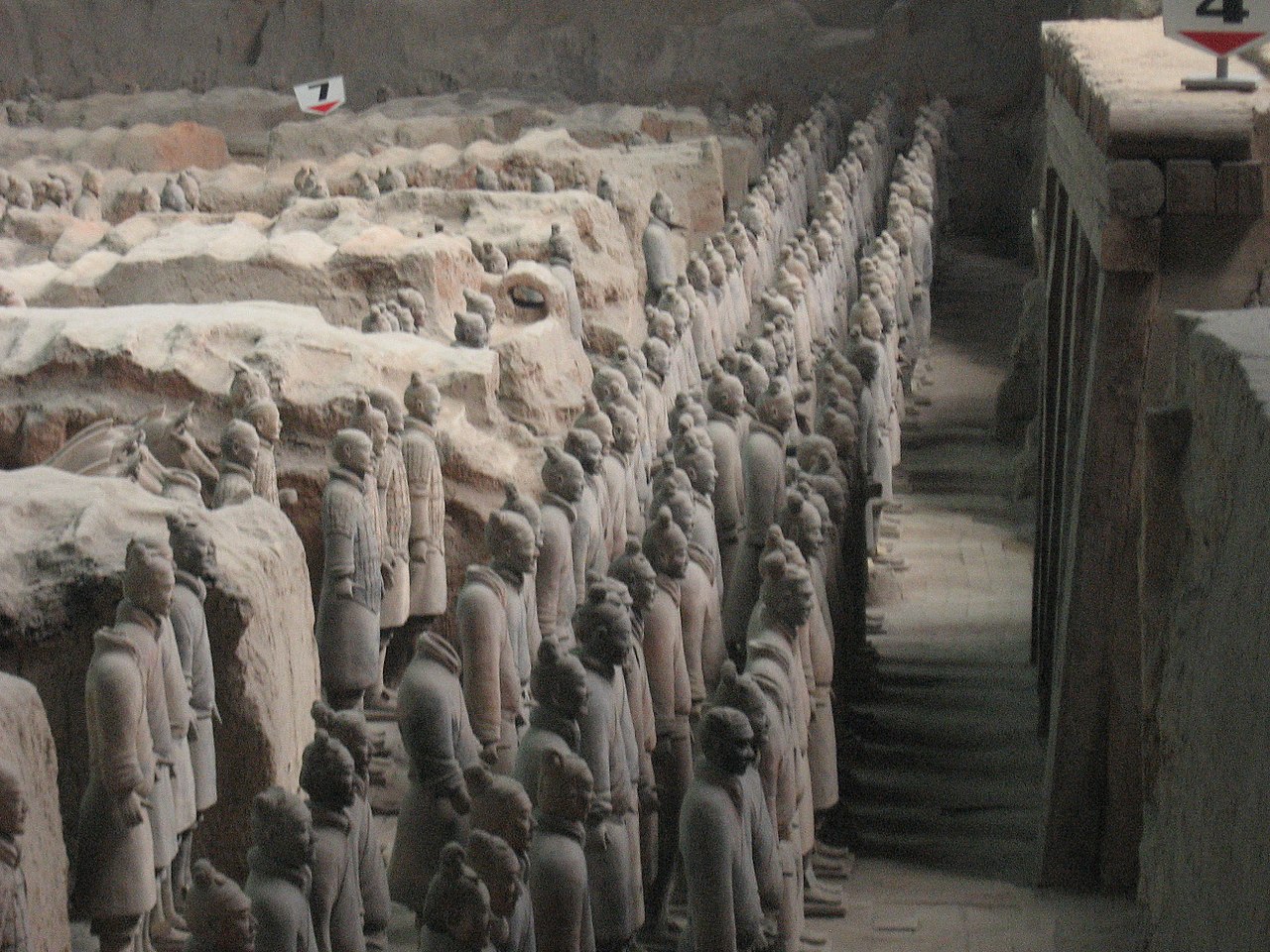 Unknown Author, CC BY-SA 3.0, Wikimedia Commons
Unknown Author, CC BY-SA 3.0, Wikimedia Commons
Educational Opportunities Ahead
Once restoration is complete, this commander may go on display, offering scholars and visitors a chance to see him up close.
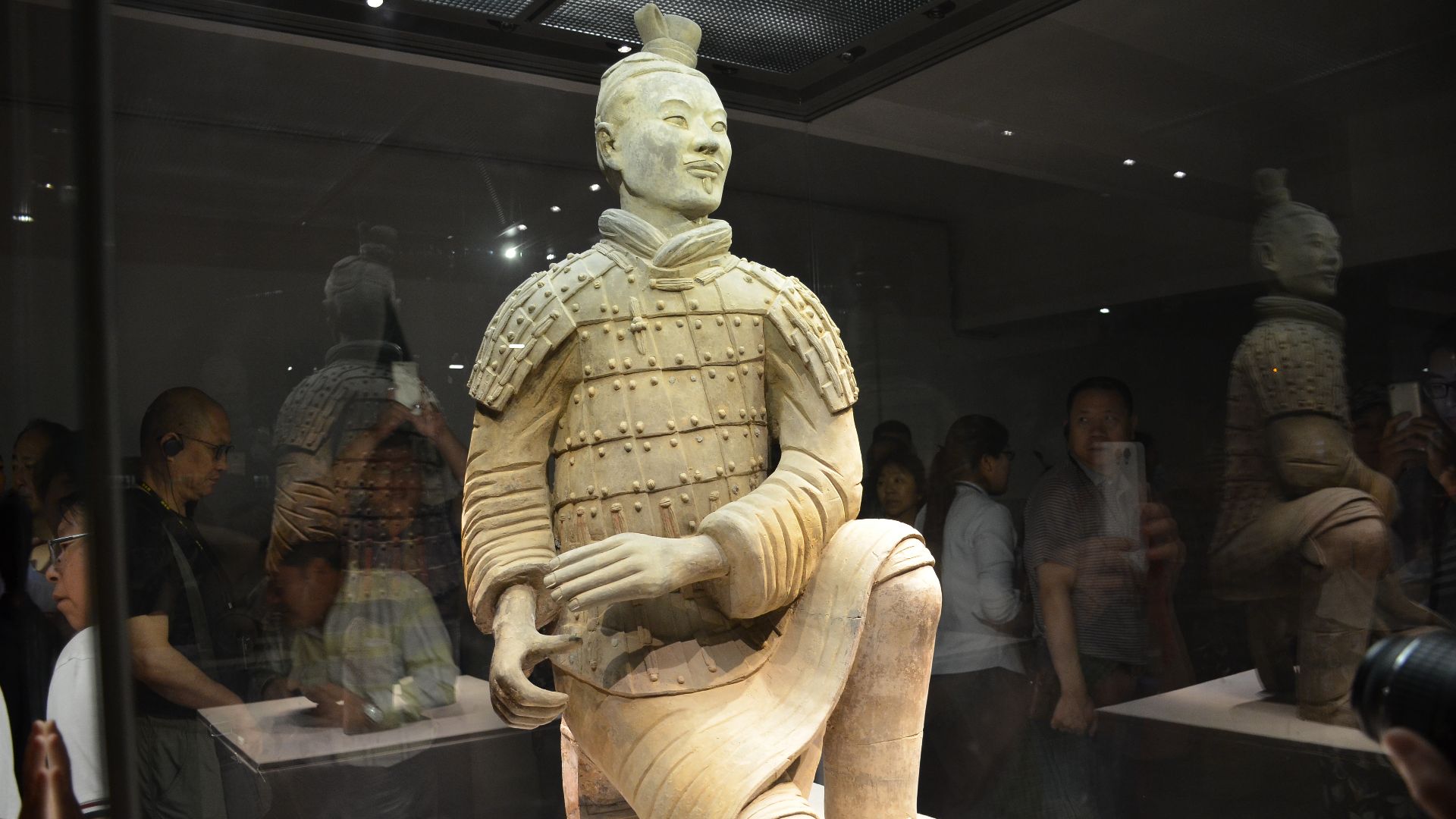 shankar s. from Dubai, united arab emirates, Wikimedia Commons
shankar s. from Dubai, united arab emirates, Wikimedia Commons
50 Years of Discovery
In 2024, the Terracotta Warriors marked their 50th anniversary since that remarkable 1974 discovery. In half a century, archaeologists have uncovered thousands of figures—but finds like this rare commander prove the site still holds many secrets waiting in the soil.
China’s Cultural Diplomacy
The Terracotta Army remains a powerful symbol in global cultural exchange. Finds like this inspire both national pride and international collaboration.
What Lies Beneath?
With thousands of figures still underground, this commander is likely just one of many surprises yet to be revealed.
Clay with Character
No two warriors are identical. Our new commander’s unique face and attire show the individuality artisans built into each piece—personal touches frozen in clay for two millennia.
Unearthing the Emperor’s Army
Generations of archaeologists have worked to recover and protect these soldiers—bringing Qin Shi Huang’s grand afterlife plan back to life.
Restoration: The Gentle Art
Restoration teams are carefully aligning fragments, ensuring the commander’s rebirth is both scientifically accurate and artistically faithful.
Echoes of Power
From armor to posture, every detail is a reminder of the authority this figure once symbolized—projecting the presence of a man who commanded even in death.
 Maros M r a z (Maros), CC BY-SA 3.0, Wikimedia Commons
Maros M r a z (Maros), CC BY-SA 3.0, Wikimedia Commons
Awaiting the Official Reveal
No display date has been set, but anticipation is building for the commander’s first public appearance.
The Story Still Being Written
History still lies beneath our feet. This rare commander is just one thrilling chapter in an unfolding epic that began 50 years ago and shows no sign of ending.
You Might Also Like:
In 2015 archaeologists in Greece uncovered an undisturbed Bronze Age tomb in an olive grove.

